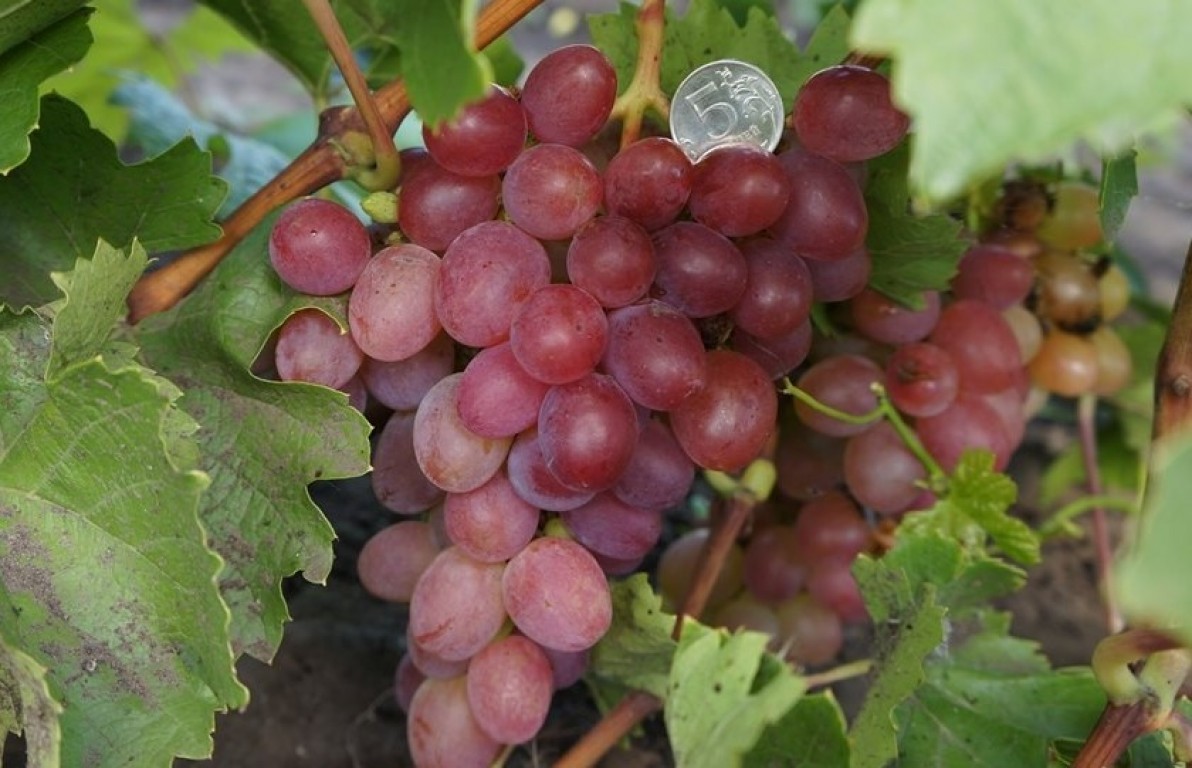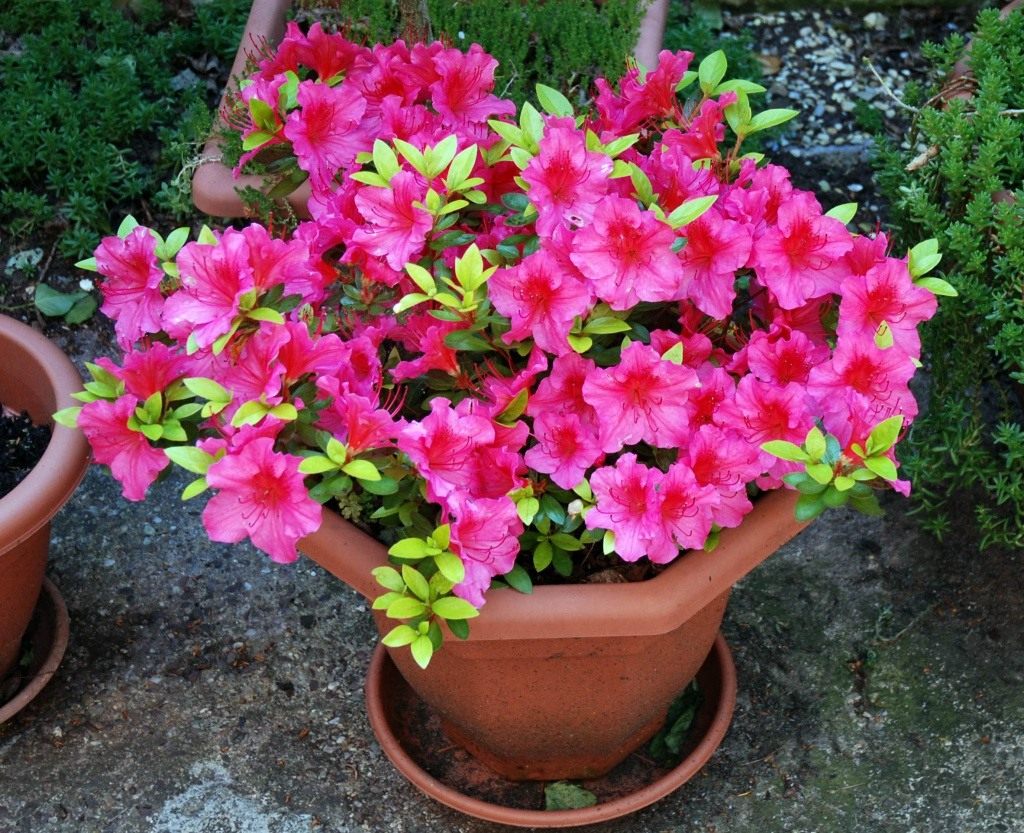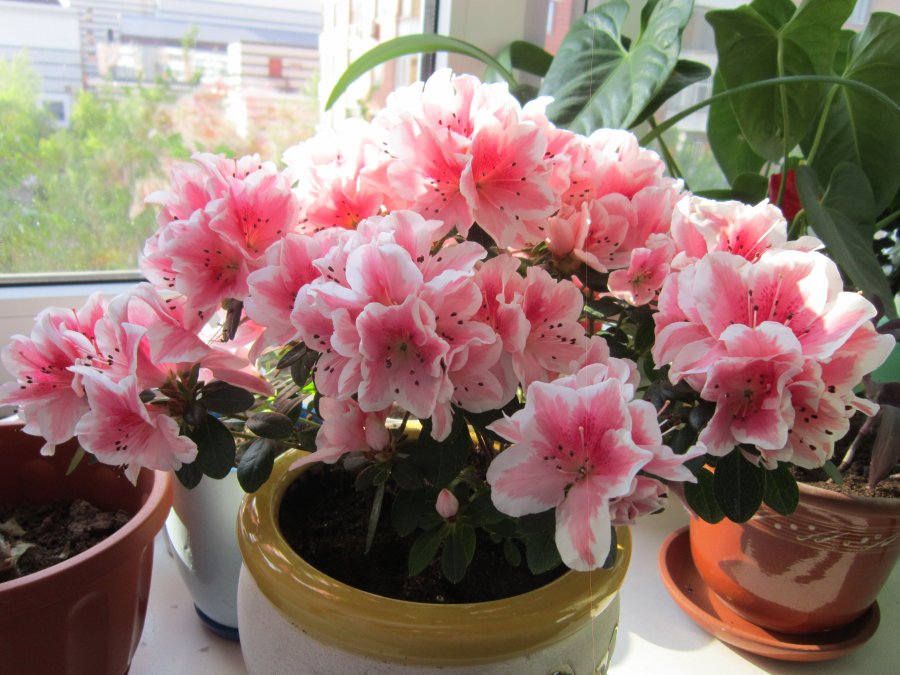In late autumn, when it is gray and cold outside, azalea flowers of different shades bloom on the windowsills of many apartments. This amazing plant is a small bush covered with flowers native to China and India.
Indoor azalea is quite capricious and demanding to care for. It takes a lot of effort to make it bloom. But for the sake of beautiful flowers, many growers grow a plant at home. If you have a desire to acquire an azalea, then the information in our article will help you grow a healthy flower that will delight you with its gorgeous flowering.
Content
Azalea flower: photo, description and varieties
 The plant, which has gained great popularity among gardeners, belongs to the genus Rhododendron. In nature, azalea is a short shrub with evergreen elliptical leaves and flat or tubular flowers.
The plant, which has gained great popularity among gardeners, belongs to the genus Rhododendron. In nature, azalea is a short shrub with evergreen elliptical leaves and flat or tubular flowers.
The flowers appearing on the tops of last year's shoots can be simple, fringed or terry... Azalea blooms with solid or variegated flowers of pink, purple, coral, red or white.
Pubescent dark green leaves grow up to 2-3.5 cm. They are dull below, and shiny above. At home, two types of azaleas are most often grown:
- Indian.
- Japanese.
However, as a result of the work of breeders, plants have been obtained whose flowers are of an unusual shape.
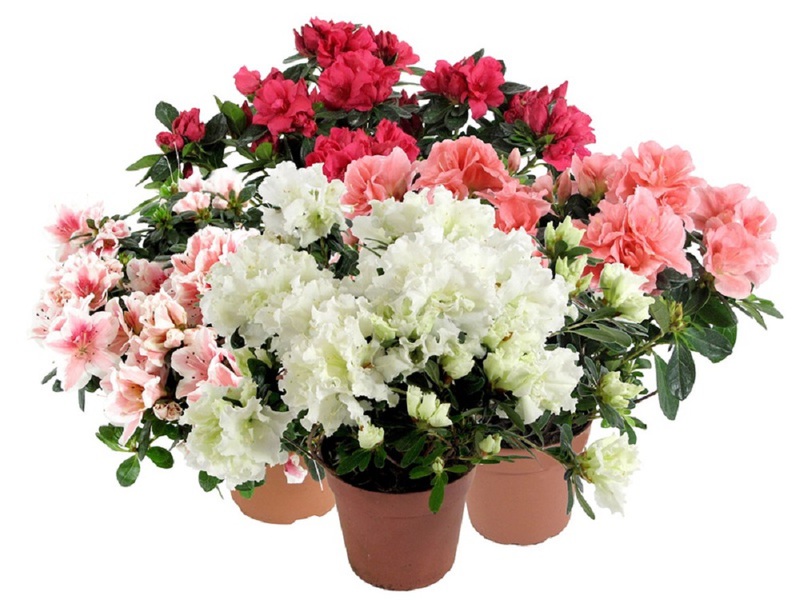
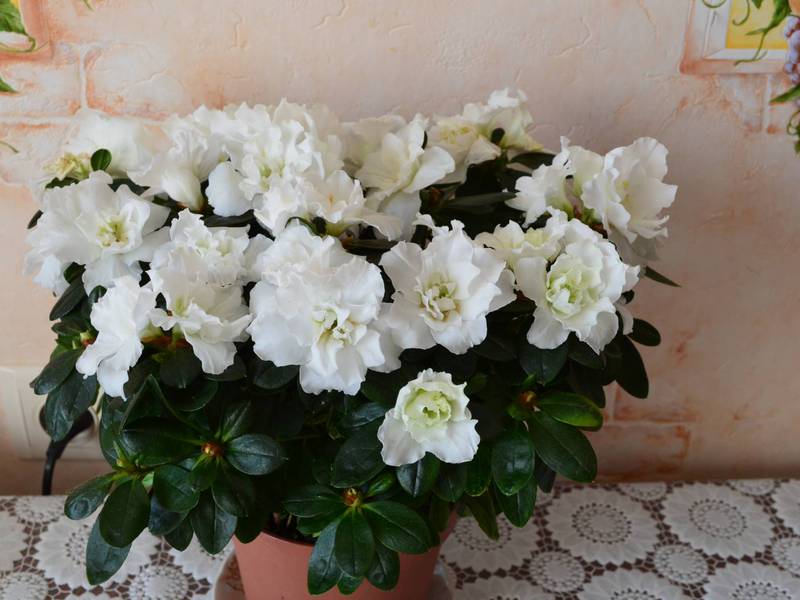
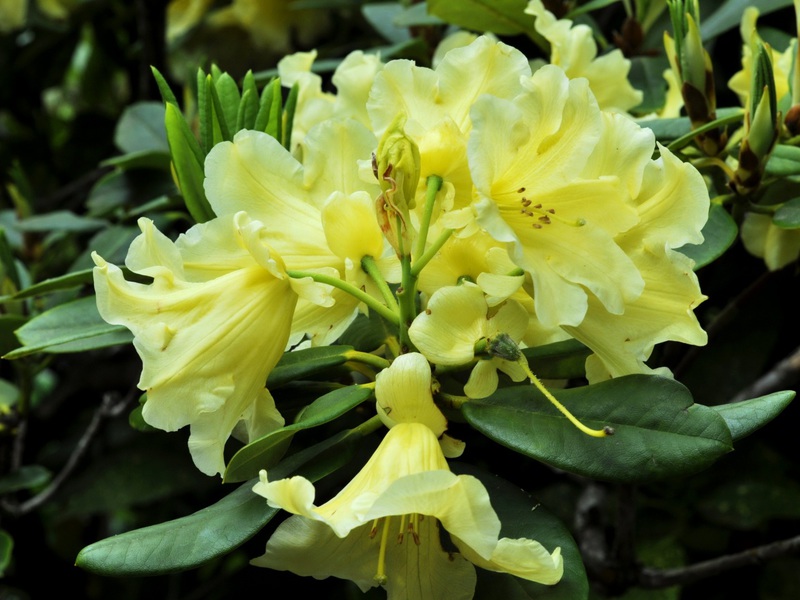
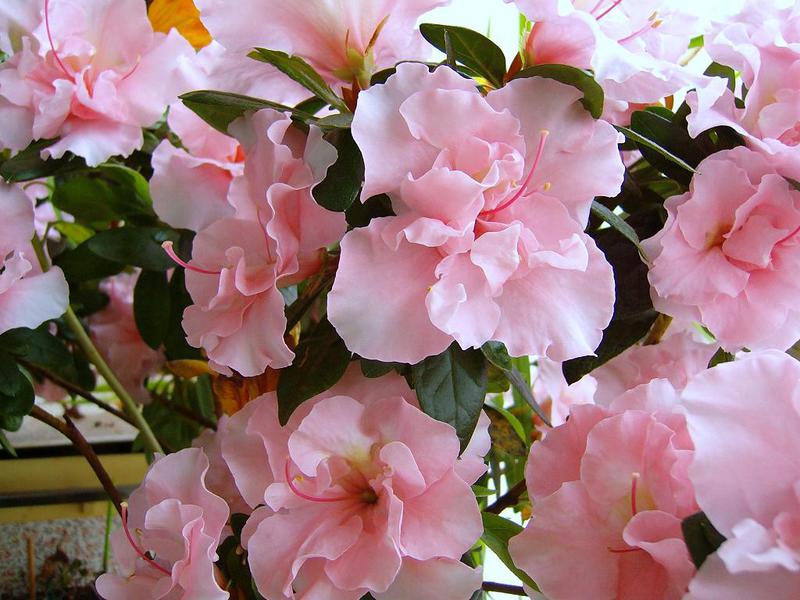
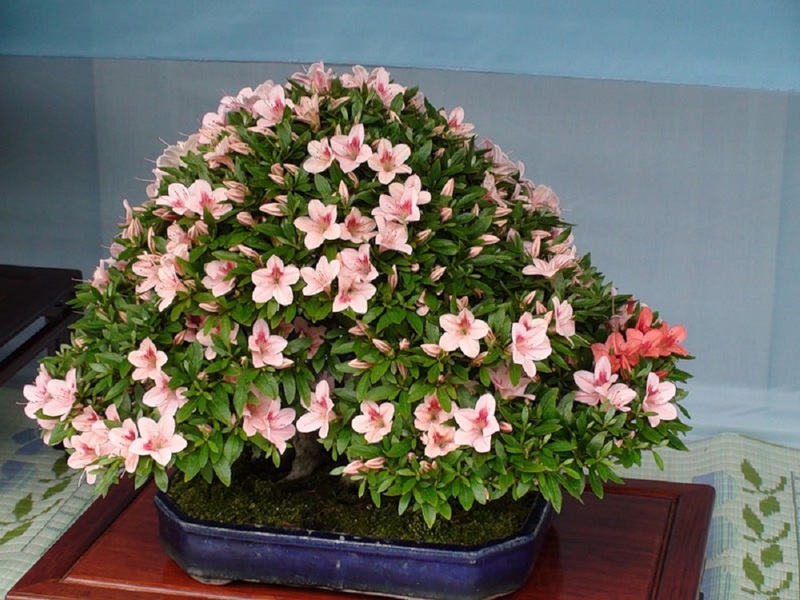
Indian azalea... The plant is a compact shrub that grows up to 40-60 cm. In the garden, the Indian azalea can be more than one and a half meters high. Varieties of this type of plant can be of various shapes and colors. They bloom at different times and have different corolla sizes.
Japanese azalea... At home, the plant reaches a height of 60 cm. With age, the bushes take on a form, strewn with flowers and pillow buds.
Japanese azalea is inferior to other plant species in size and appearance of flowers, but very popular thanks to abundant flowering and unpretentious care. The flower of this variety has thousands of luxurious varieties that adorn rooms, gardens and greenhouses.
Azalea flowers - home care
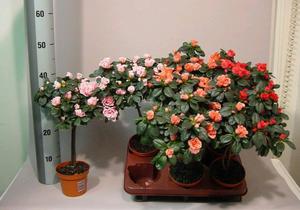 The plant requires careful care, and for its flowering it is necessary to create conditions close to natural.
The plant requires careful care, and for its flowering it is necessary to create conditions close to natural.
Lighting and temperature control... Indoor azalea loves diffused light, so it grows well on eastern windowsills. You can grow the plant near the north and west windows. A shrub pushed into a shady corner will not grow and bloom.
And if placed on the southern windowsill, then the plant will shed the leaves and will stop growing, since direct sunlight is destructive for him. When caring for azalea at home, it is required to observe a fairly strict temperature regime:
- in summer, the shrub can be kept at an air temperature of 18 ° C-21 ° C;
- in winter, the temperature should be no higher than 16 ° C-18 ° C ;
- during the budding period, the temperature drops to 10 ° C-13 ° C.
Experienced flower growers turn on an air conditioner next to the azalea, thereby cooling the air and creating the desired microclimate. As soon as the heating system starts working, the plant can be move to a closed loggia.
Watering and air humidity
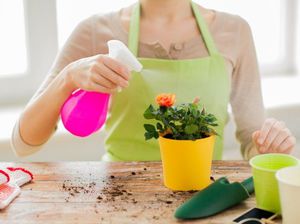 When growing azaleas, it is necessary to ensure that the earthy clod never dries out. The plant is watered a little acidified soft water room temperature.
When growing azaleas, it is necessary to ensure that the earthy clod never dries out. The plant is watered a little acidified soft water room temperature.
The water should settle within a few days. You can acidify it with two or three crystals diluted in one liter of water.
If it is hot in the apartment, then the flower pot is placed for a while in a deep container filled with water. The root system should be saturated with liquid, and the soil should be soaked well.
Azalea likes high humidity air, which must be provided at home. This can be done in three ways:
- Spray the leaves with settled water several times a day. It is better not to do this during flowering, since the flower petals darken from moisture.
- Place containers with water around the plant, which evaporates and humidifies the air.
- A special air humidifier purchased in the store will increase the humidity well.
Soil and top dressing
It is recommended to grow indoor azalea in an acidic substrate (pH 4-4.5). A special earthen mixture "Azalea" is sold in almost any flower shop.
The soil can be prepared independently from coniferous soil, river sand and moss (2: 1: 1). A drainage layer is first added to the flower pot, and only then the earthen mixture.
Azalea is fed once a week in spring and summer ammonium nitrate, superphosphate, ammonium sulfate or potassium sulfate. During the period of active growth and flowering, the plant is watered once every ten days with a superphosphate solution (about 15 g of fertilizer per 10 liters of water).
Flower transplant
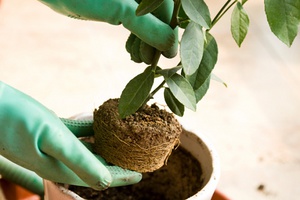 Plant care includes a timely transplant. A young plant is transplanted annually, and an adult one every two or three years.
Plant care includes a timely transplant. A young plant is transplanted annually, and an adult one every two or three years.
The first transplant should be carried out some time after the purchase of the plant. If you brought a blooming azalea from the store, then it will need to be transplanted only after flowering... If the plant has not bloomed, then it must be given a few days for adaptation and only then transplanted.
Azalea roots are very thin, so it is recommended not to transplant it, but transfer from pot to pot... At the same time, the earthy ball should remain on the root system of the flower.
The bush is transplanted into a low flower pot, at the bottom of which drainage is first poured, and then a small layer of prepared earthen mixture. The flower, together with the old soil, is installed in a new container and neatly on the sides sprinkled with substrate.
The root collar of a flower cannot be buried too deeply. You need to take care of the newly transplanted azalea even more carefully. We must not forget to water and spray it.
Diseases and pests of azaleas
If you take care of the azalea correctly at home, then it usually does not get sick. But if the plant is kept at too warm temperature and not very humid air, it can be affected by some diseases and pests:
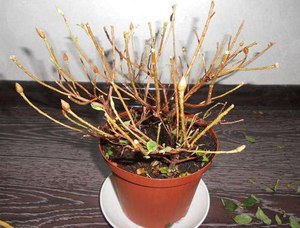 On a plant infected with a spider mite, you can see orange or yellowish small insects and a thin cobweb. The tick sucks the juices from the leaves, they begin to turn yellow and fall off. The plant needs to be rinsed in the shower, the leaves should be washed gently with soapy water. If this does not help, then treatment with Aktelika or Fitoverma solution is necessary.
On a plant infected with a spider mite, you can see orange or yellowish small insects and a thin cobweb. The tick sucks the juices from the leaves, they begin to turn yellow and fall off. The plant needs to be rinsed in the shower, the leaves should be washed gently with soapy water. If this does not help, then treatment with Aktelika or Fitoverma solution is necessary.- Also, the leaves turn yellow, dry and fall if the azalea is affected by the scale insect. It appears on leaves and stems as raised, brown plaques. The plant must be sprayed with "Aktelik", "Aktara" or "Karbofos".
- Azalea can get mixed chlorosis, in which yellow spots appear along the edges of the leaves.In this case, the plant just needs to be fed with iron or magnesium sulfate.
- Signs of the fundamental wilting of the plant are the leaves that have lost their tone and dried up. This means that the shrub has become infected with the Fusarium fungus through damage or new soil. First of all, the flower needs to be watered with a foundation. After a while, the soil is treated with a special antibiotic.
After the plant begins to heal, it will be needed from time to time pour a solution of potassium permanganate.
Flowering and bush formation
At home, azalea shoots should be pinched and trimmed regularly. This will help form a beautiful bush and remove unnecessary and weak branches.
Timely pinching stimulates the plant to long and abundant flowering. For this, young shoots cut to the fifth leaf.
First of all, the branches located next to the flower buds are pinched. As a result of this procedure, from two to four buds will appear from each bud.
To make a miniature tree from an azalea, it must be cut in a special way:
- A strong branch is selected.
- Weak branches are pruned.
- Too long faded shoots are cut off.
- A support is installed near the remaining branch.
- As soon as the bush reaches the desired height, the branch is pinched.
As a result, over time, the plant will begin to branch. To form a uniform crown on a room azalea, you need it turn regularly to the light source in different directions.
For the plant to bloom longer, faded and wilted buds must be constantly removed. To prevent depletion of the bush, seed pods should be removed.
Reproduction of azaleas at home
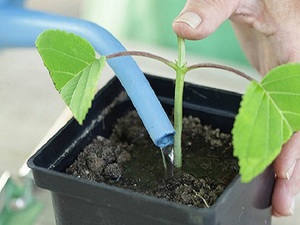 The plant propagates in the following ways: by dividing the bush; cuttings; seeds and grafting.
The plant propagates in the following ways: by dividing the bush; cuttings; seeds and grafting.
Azalea cuttings... Cuttings are harvested in spring or summer from semi-lignified branches. The length of each segment should be about 5-6 cm. Cutting points are processed with crushed charcoal or a root formation stimulator.
Prepared cuttings to a depth of several centimeters are planted in coniferous land or sphagnum peat. Then each stalk is covered with polyethylene or a glass container. Care consists in regular ventilation and spraying. The cuttings should take root in about a month.
Dividing the bush... In this way, shrubs reproduce at the age of at least 3-4 years. It should be divided carefully so as not to damage the thin roots of the plant.
Each cut is planted in small pots filled with an earthy mixture suitable for azaleas. Young plants are watered and set in a slightly cool, well-lit area.
When purchasing an azalea from a store, opt for a flower with a lot of buds, rather than one that already blooms profusely. Such a bush at home easily adaptable and will bloom longer. And with proper transplantation and care, the plant will delight with its flowering both the second and third time.
